Chengjiang Fauna
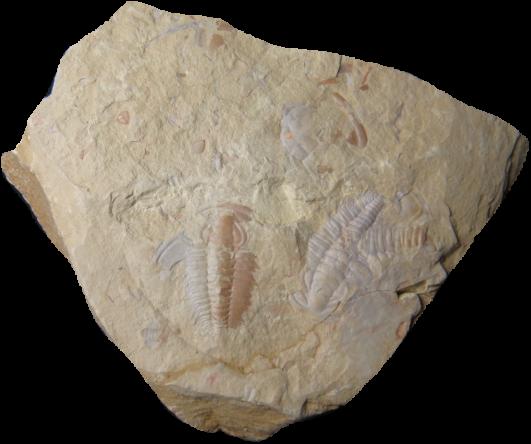
Photographed by Michael P. Klimetz
Eoredlichia
[Trilobite]
Early Cambrian
Chengjiang Maotianshan Shales
Quiongzhusi Section
Yuanshan Member
Heilinpu Formation
Maotianshan
Anning
Yunnan Province
CHINA

Photographed by Michael P. Klimetz
Eoredlichia
[Trilobite]
Early Cambrian
Chengjiang Maotianshan Shales
Quiongzhusi Section
Yuanshan Member
Heilinpu Formation
Maotianshan
Anning
Yunnan Province
CHINA

Eoredlichia
[Interpretation]
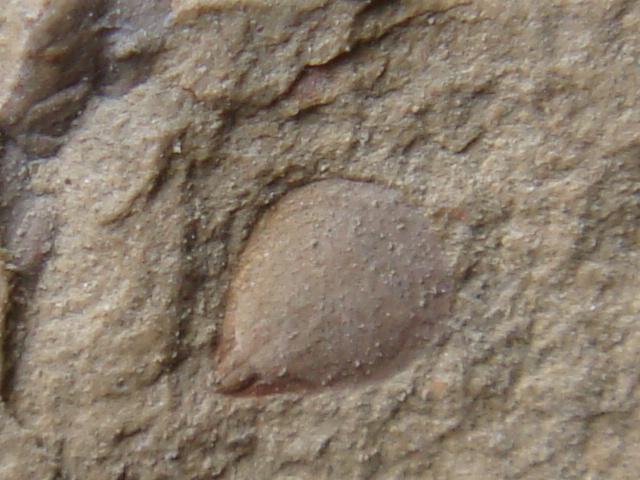
Photographed by Michael P. Klimetz
Diandongia
[Brachiopod]
Early Cambrian
Chengjiang Maotianshan Shales
Quiongzhusi Section
Yuanshan Member
Heilinpu Formation
Maotianshan
Anning
Yunnan Province
CHINA
The Maotianshan Shales are a series of Lower Cambrian deposits, famous for their Konservat Lagerstätten, or high number of fossils. They take their name from Maotianshan Hill in Chengjiang County, Yunnan Province, China. The Chengjiang fauna occur in outcrops of the Maotianshan Shales of the Qiongzhusi Formation that date to between 525 and 520 million years ago - the middle of the early Cambrian and at least some 10 million years older than the Burgess Shale. The Maotianshan shale is one of some forty Cambrian fossil-bearing successions worldwide exhibiting exquisite preservation of rarely preserved, non-mineralized soft tissue, comparable to the fossils of the Burgess Shale. Although fossils from the region have been known from the early part of the twentieth century, Chengjiang was first recognized for its exquisite states of preservation with the 1984 discovery of the naraoiid Misszhouia, a soft-bodied relative of trilobites. Since then, the locality has been intensively studied by scientists worldwide, yielding a constant flow of new discoveries and an extensive literature expressing scientific debate surrounding the interpretation of discoveries. Over this time, various taxa have been revised or re-assigned to different groups. Interpretations have led to many refinements of the phylogeny of various groups and even the erection of the new phylum Vetulicolia of primitive deuterostomes. The Chengjiang biota already has all the animal groups found in the Burgess Shale; however, since it is ten million years older, it more strongly supports the deduction that metazoans diversified earlier or faster in the early Cambrian than does the Burgess Shale fauna alone. The preservation of an extremely diverse faunal assemblage renders the Maotianshan shale at present the most important locality for understanding the evolution of early multi-cellular life, and particularly the members of phylum Chordata, which includes all vertebrates. The Chengjiang fossils comprise the oldest diverse metazoan assemblage above the Proterozoic-Phanerozoic transition, and thus the fossil record’s best data source for understanding the apparently rapid diversification of life known as the Cambrian Explosion. Fossils occur in a section of mudstone fifty meters thick in the Yuanshan Member of the Qiongzhusi Formation. The Yuanshan Member is extensive, covering tens of thousands of square kilometers of eastern Yunnan Province, where there are numerous, scattered outcrops yielding fossils. Studies of the strata are consistent with a tropical environment with sea level changes and tectonic activity. The region is believed to have been a shallow sea with a muddy bottom. The preserved fauna is primarily benthic and was likely buried by periodic turbidity currents, since most fossils do not show evidence of post mortem transport. Like the younger Burgess Shale fossils, the paleo-environment enabled preservation of non-mineralized, soft body parts. Fossils are found in thin layers less than an inch thick. The soft parts are preserved as aluminosilicate films, often with high oxidized iron content, and often exhibiting exquisite detail. The Chengjiang biota comprises an extremely diverse faunal assembly, with some 185 species described in the literature as of June 2006. Of these, nearly half are arthropods, few of which had the hard, mineral-reinforced exoskeletons characteristic of all later arthropoda; only about 3% of the organisms known from Chengjiang have hard shells, and most of those are the trilobites, of which there are five species, all of which have been found with traces of legs, antennae, and other soft body parts, an exceedingly rare occurrence in the fossil record. Phylum Porifera (sponges; 15 species) and Priapulida (16 species) are also well represented. Other phyla represented are Brachiopoda, Chaetognatha, Cnidaria, Ctenophora, Echinodermata, Hyolitha, Nematomorpha, Phoronida, Protista, and Chordata. About one in eight animals are problematic forms of uncertain affinity, some of which may have been evolutionary experiments that survived for only a brief period as benthic environments rapidly changed in the Cambrian. Chengjiang is the richest source of the lobopodia, often considered a distinct phylum, with six genera represented: Luolishania, Paucipodia, Cardiodictyon, Hallucigenia (also known from the Burgess Shale), Microdictyon, and Onychodictyon. Perhaps the most important fossils from Chengjiang are eight possible members of phylum Chordata, the phylum to which all vertebrates belong. The most famous is Myllokunmingia, possibly a very primitive agnathid (i.e., jawless fish). Similar to Myllokunmingia is Haikouichthys ercaicunensis, another primitive fish-like animal. The enigmatic Yunnanozoon lividum is considered to be the earliest hemichordate, possessing many of the characteristic chordate features and providing an anatomical link between invertebrates and chordates. Haikouella lanceolata is described to be the earliest craniate-like chordate. This fish-like animal has many similarities to Y. lividum, but also differs in several aspects: it has a discernible heart, dorsal and ventral aorta, gill filaments, and a notochord (neural chord). At present, there is no agreement as to the systematic placement of the Vetulicola, represented by seven species from Chengjiang: originally described as crustacean arthropods, the Vetulicola were later erected as a new phylum of primitive deuterostomes. Some place them with the urochordates, based on putative affinity with the Phylum Chordata. They are thought to have been swimmers that either were filter feeders or detritivores. Some two dozen animals from the Chengjiang biota are problematic regarding phylogenetic assignment. Among these, Anomalocaris saron, the alleged predatory terror of the early Cambrian, is the most famous. Stromatoveris psygmoglena is a possible bilateran missing link between Ediacaran fronds and Cambrian ctenophores.

Photographed by Michael P. Klimetz
Yunnanocephalus
[Trilobite/Pygidium]
Early Cambrian
Chengjiang Maotianshan Shales
Quiongzhusi Section
Yuanshan Member
Heilinpu Formation
Maotianshan
Anning
Yunnan Province
CHINA

Photographed by Michael P. Klimetz
Yunnanocephalus
[Trilobite/Pygidium]
Early Cambrian
Chengjiang Maotianshan Shales
Quiongzhusi Section
Yuanshan Member
Heilinpu Formation
Maotianshan
Anning
Yunnan Province
CHINA

Yunnanocephalus
[Interpretation]

Photographed by Michael P. Klimetz
Isoxys paradoxus
[Arthropod]
Early Cambrian
Chengjiang Maotianshan Shales
Quiongzhusi Section
Yuanshan Member
Heilinpu Formation
Maotianshan
Anning
Yunnan Province
CHINA
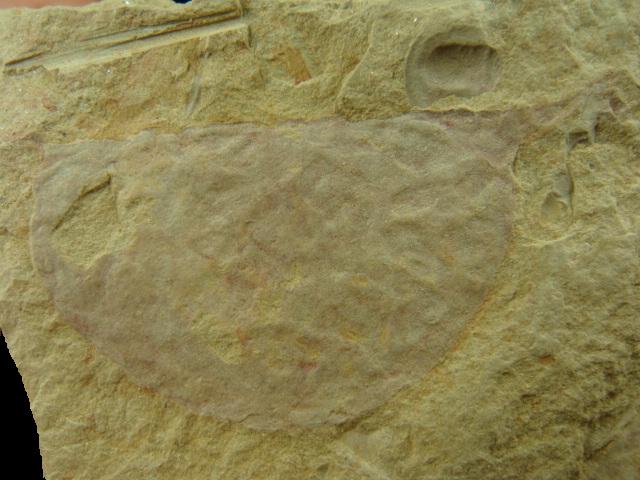
Photographed by Michael P. Klimetz
Isoxys paradoxus
[Arthropod]
Early Cambrian
Chengjiang Maotianshan Shales
Quiongzhusi Section
Yuanshan Member
Heilinpu Formation
Maotianshan
Anning
Yunnan Province
CHINA

Photographed by Michael P. Klimetz
Isoxys paradoxus
[Arthropod/Double]
Early Cambrian
Chengjiang Maotianshan Shales
Quiongzhusi Section
Yuanshan Member
Heilinpu Formation
Maotianshan
Anning
Yunnan Province
CHINA

Photographed by Michael P. Klimetz
Isoxys paradoxus
[Arthropod with Partial Trilobite Cephalon]
Early Cambrian
Chengjiang Maotianshan Shales
Quiongzhusi Section
Yuanshan Member
Heilinpu Formation
Maotianshan
Anning
Yunnan Province
CHINA

Photographed by Michael P. Klimetz
Isoxys paradoxus
[Arthropod]
Early Cambrian
Chengjiang Maotianshan Shales
Quiongzhusi Section
Yuanshan Member
Heilinpu Formation
Maotianshan
Anning
Yunnan Province
CHINA
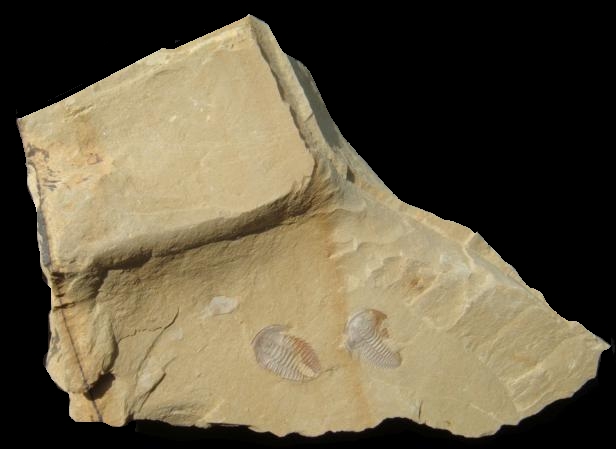
Photographed by Michael P. Klimetz
Wutingaspis
[Trilobites]
Early Cambrian
Chengjiang Maotianshan Shales
Quiongzhusi Section
Yuanshan Member
Heilinpu Formation
Maotianshan
Anning
Yunnan Province
CHINA

Photographed by Michael P. Klimetz
Wutingaspis
[Trilobites]
Early Cambrian
Chengjiang Maotianshan Shales
Quiongzhusi Section
Yuanshan Member
Heilinpu Formation
Maotianshan
Anning
Yunnan Province
CHINA

Wutingaspis
[Interpretation]

Photographed by Michael P. Klimetz
Acrothele
[Brachiopod]
Eoredlichia
[Trilobite]
Early Cambrian
Chengjiang Maotianshan Shales
Quiongzhusi Section
Yuanshan Member
Heilinpu Formation
Maotianshan
Anning
Yunnan Province
CHINA

Photographed by Michael P. Klimetz
Acrothele
[Brachiopod]
Early Cambrian
Chengjiang Maotianshan Shales
Quiongzhusi Section
Yuanshan Member
Heilinpu Formation
Maotianshan
Anning
Yunnan Province
CHINA
Acrothele
Acrothele
Eoredlichia
Eoredlichia


Photographed by Michael P. Klimetz
Guangweicaris
[Arthropod]
Early Cambrian
Chengjiang Maotianshan Shales
Quiongzhusi Section
Yuanshan Member
Heilinpu Formation
Maotianshan
Anning
Yunnan Province
CHINA
Photographed by Michael P. Klimetz
Guangweicaris
[Arthropod]
Early Cambrian
Chengjiang Maotianshan Shales
Quiongzhusi Section
Yuanshan Member
Heilinpu Formation
Maotianshan
Anning
Yunnan Province
CHINA

Guangweicaris
[Interpretation]
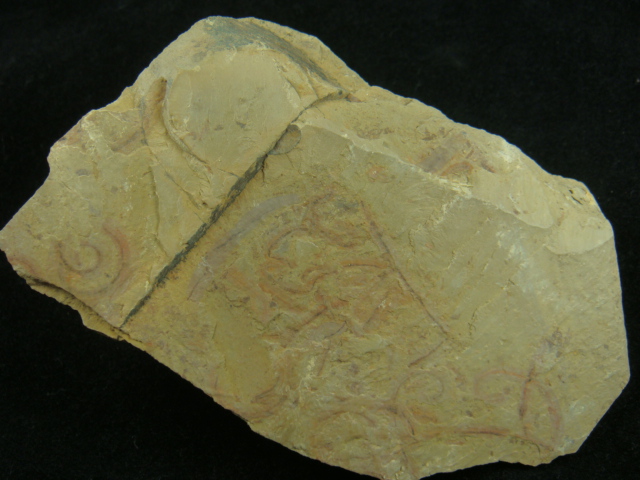
Photographed by Michael P. Klimetz
Palaeoscolex sinensis
[Nematomorph]
Early Cambrian
Chengjiang Maotianshan Shales
Quiongzhusi Section
Yuanshan Member
Heilinpu Formation
Maotianshan
Anning
Yunnan Province
CHINA

Photographed by Michael P. Klimetz
Palaeoscolex sinensis
[Nematomorph]
Early Cambrian
Chengjiang Maotianshan Shales
Quiongzhusi Section
Yuanshan Member
Heilinpu Formation
Maotianshan
Anning
Yunnan Province
CHINA

Photographed by Michael P. Klimetz
Dinomischus
[Problematic]
Early Cambrian
Chengjiang Maotianshan Shales
Quiongzhusi Section
Yuanshan Member
Heilinpu Formation
Maotianshan
Anning
Yunnan Province
CHINA

Dinomischus
[Interpretation]

Photographed by Michael P. Klimetz
Leanchoilia sp.
[Arachnomorph Arthropod]
Early Cambrian
Chengjiang Maotianshan Shales
Quiongzhusi Section
Yuanshan Member
Heilinpu Formation
Maotianshan
Anning
Yunnan Province
CHINA
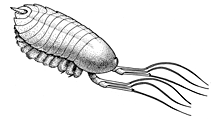
Leanchoilia
[Interpretation]

Photographed by Michael P. Klimetz
Lingulella sp.
[Brachiopods]
Eoredlichia sp.
[Trilobite]
Early Cambrian
Chengjiang Maotianshan Shales
Quiongzhusi Section
Yuanshan Member
Heilinpu Formation
Maotianshan
Anning
Yunnan Province
CHINA
Eoredlichia
Lingulella

Photographed by Michael P. Klimetz
Guangweicaris
[Arthropod]
Early Cambrian
Chengjiang Maotianshan Shales
Quiongzhusi Section
Yuanshan Member
Heilinpu Formation
Maotianshan
Anning
Yunnan Province
CHINA

Photographed by Michael P. Klimetz
Guangweicaris
[Arthropod]
Early Cambrian
Chengjiang Maotianshan Shales
Quiongzhusi Section
Yuanshan Member
Heilinpu Formation
Maotianshan
Anning
Yunnan Province
CHINA
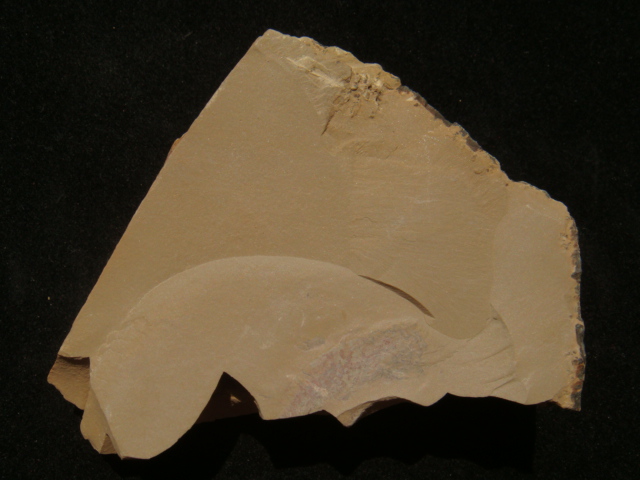
Photographed by Michael P. Klimetz
Leanchoilia sp.
[Arachnomorph Arthropod]
Early Cambrian
Chengjiang Maotianshan Shales
Quiongzhusi Section
Yuanshan Member
Heilinpu Formation
Maotianshan
Anning
Yunnan Province
CHINA

Photographed by Michael P. Klimetz
Leanchoilia sp.
[Arachnomorph Arthropod]
Early Cambrian
Chengjiang Maotianshan Shales
Quiongzhusi Section
Yuanshan Member
Heilinpu Formation
Maotianshan
Anning
Yunnan Province
CHINA

Photographed by Michael P. Klimetz
Bradoriids
[Bivalved Arthropods]
Early Cambrian
Chengjiang Maotianshan Shales
Quiongzhusi Section
Yuanshan Member
Heilinpu Formation
Maotianshan
Anning
Yunnan Province
CHINA

Photographed by Michael P. Klimetz
Bradoriids
[Bivalved Arthropods]
Early Cambrian
Chengjiang Maotianshan Shales
Quiongzhusi Section
Yuanshan Member
Heilinpu Formation
Maotianshan
Anning
Yunnan Province
CHINA
Suggested Links for Further Study
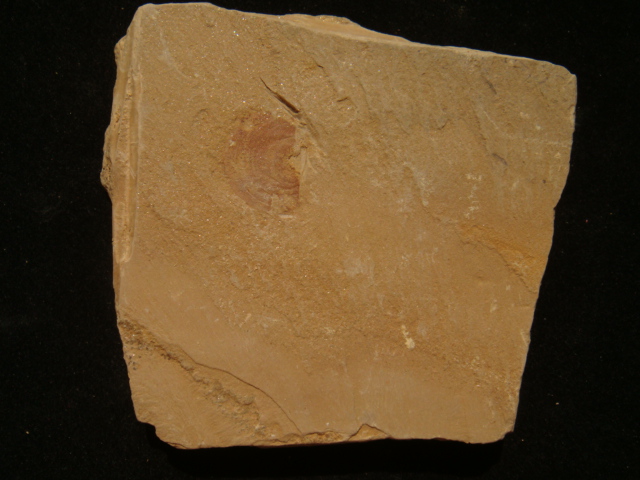
Photographed by Michael P. Klimetz
Heliomedusa sp.
[Brachiopod]
Early Cambrian
Chengjiang Maotianshan Shales
Quiongzhusi Section
Yuanshan Member
Heilinpu Formation
Maotianshan
Anning
Yunnan Province
CHINA

Photographed by Michael P. Klimetz
Heliomedusa sp.
[Brachiopod]
Early Cambrian
Chengjiang Maotianshan Shales
Quiongzhusi Section
Yuanshan Member
Heilinpu Formation
Maotianshan
Anning
Yunnan Province
CHINA

Heliomedusa
[Interpretation]
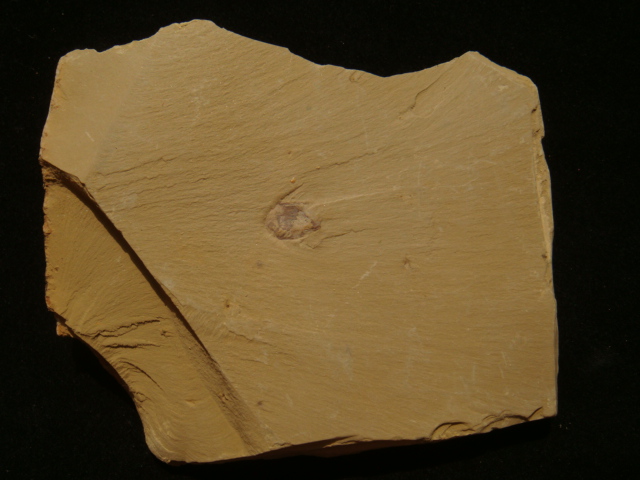
Photographed by Michael P. Klimetz
Naraoia walcott
[Trilobitamorph]
Early Cambrian
Chengjiang Maotianshan Shales
Quiongzhusi Section
Yuanshan Member
Heilinpu Formation
Maotianshan
Anning
Yunnan Province
CHINA

Photographed by Michael P. Klimetz
Naraoia walcott
[Trilobitamorph]
Early Cambrian
Chengjiang Maotianshan Shales
Quiongzhusi Section
Yuanshan Member
Heilinpu Formation
Maotianshan
Anning
Yunnan Province
CHINA

Naraoia
[Interpretation]

Location Map

Excavations at Quarried Exposure of Fossiliferous Strata
Photographed by E. Landing, NYSM